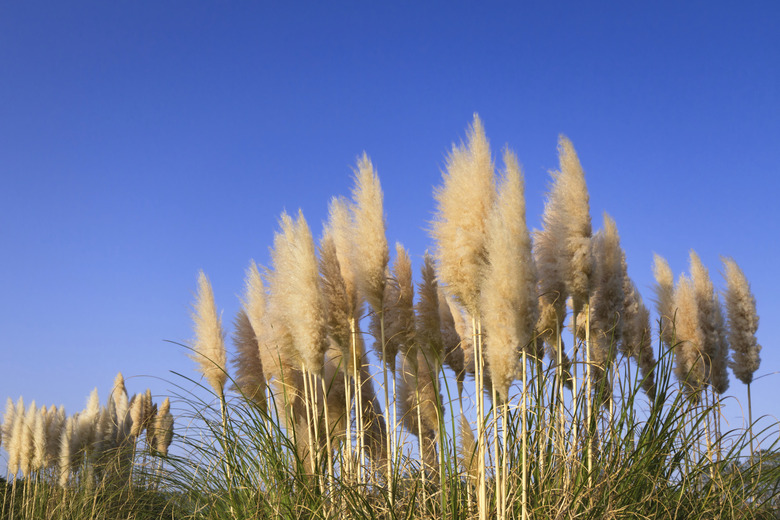When To Plant Pampas Grass
Pampas Grass (Cortaderia selloana) creates a tall, flowing feature in your garden when in full bloom. Planting at the appropriate time for your geographical area is important if you want the plants to have tall 10-foot plumes by late summer. The grass thrives in warm temperatures and is a perennial in U.S. Department of Agriculture plant hardiness zones 8 through 10. Cooler growing zones can also plant pampas grass, but is will only grow as an annual. Pampas grass is considered invasive in some areas of the U.S.
Preparing Planting Area
Pampas grass produces long, feathery plumes and can have an aggressive growth pattern. Begin planting preparation by choosing a planting area that will not hinder the growth or block other plants. Clear the area and work the soil to a minimum depth of 12 inches about one month before the desired planting date to give the soil time to settle.
Dividing Existing Plants
Pampas grass is a clump-growing plant that is easily divided to obtain new plants. Dividing plants in early spring offers the best results with transplanting and root establishment before the height of the summer growing season. Remove the entire plant from the soil by digging around the root mass and gently pulling out the plant. Carefully break the root mass into smaller clumps that contain both root and grass stems. Plant the pampas grass transplants in a new location immediately and at the same depth they were previously growing. Wear gloves when handling pampas grass, as the blades are sharp and can cut your hands.
Starting From Seed
Planting pampas grass from seeds can begin during the late winter months. This gives the seeds enough time to germinate and grow into strong seedlings before planting them in an outdoor garden in spring. Most plants do not produce viable seeds because both male and female plants are required for pollination.
Planting Seedlings Depends on Climate
The date pampas grass seedlings are planted outdoors is dependent on the geographical area. USDA zones warmer than zone 7 rarely get freezing temperatures in the spring that will damage the plants. Gardeners in these warmer USDA zones can successfully plant pampas grass year-round. Those in cooler USDA zones should wait until after the last hard frost of the spring season.
Benefits Of Containers
Use large pots with good drainage holes to grow pampas grass if you are concerned about the plant spreading or becoming too aggressive in your garden. Growing in pots allows you to plant the grass earlier in spring, since you can easily move the pot indoors or into a protected area if there is a risk of damaging temperatures.
References
- Floridata: Cortaderia Selloana
- University of Wisconsin Extension; Master Gardener Handbook for Wisconsin Gardeners
